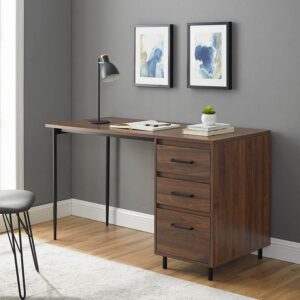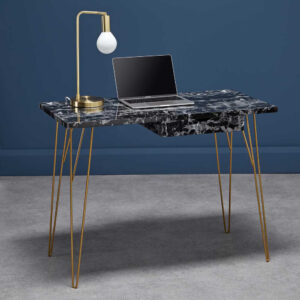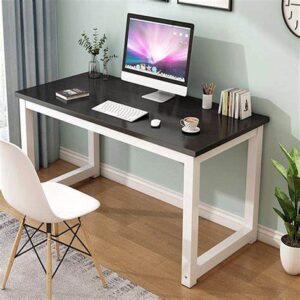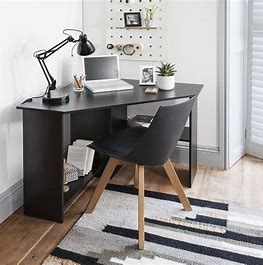Desks: they are more than just pieces of furniture; they are the epicenter of productivity, creativity, and organization in any workspace. As indispensable as they are today, the history of desks is a journey through time, reflecting the evolution of human needs and design sensibilities.
A Brief History
The concept of desks dates back to ancient civilizations where scholars and scribes used rudimentary writing surfaces. From the Egyptian scribes’ wooden boards to the Roman lectus, desks evolved alongside human progress, eventually taking more recognizable forms during the Renaissance and Enlightenment periods.
Fast forward to the industrial revolution, desks became commonplace in offices, factories, and homes, signifying a shift towards structured work environments. With the advent of technology, desks adapted to accommodate computers, laptops, and other modern gadgets, shaping the contemporary workspace we know today.
Styles and Types
When delving into the world of desks, understanding the distinction between styles and types is crucial. Styles refer to the aesthetic design elements, while types denote the functional configurations. Let’s unravel both:
Styles of Desks

Classic Traditional: Exuding elegance with ornate details and rich wood finishes.

Modern Minimalist: Embracing clean lines and sleek surfaces for a clutter-free look.

Industrial Chic: Fusing raw materials like metal and reclaimed wood for a rugged yet refined appeal.

Scandinavian Inspired: Infusing warmth and simplicity with light woods and minimalist designs.

Mid-Century Modern: Celebrating timeless design with iconic shapes and tapered legs.

Coastal Cottage: Evoking seaside charm with distressed finishes and breezy vibes.

Farmhouse Rustic: Channelling rural charm with distressed wood and vintage accents.

Bohemian Eclectic: Embracing diversity with a mix of textures, colours, and global influences.

Art Deco Glam: Adding a touch of luxury with geometric shapes and opulent materials.

Contemporary Fusion: Blending various styles for a unique, personalized aesthetic.
Types of Desks

Writing Desks: Simple and compact, ideal for focused tasks like writing or studying.

Executive Desks: Stately and spacious, designed for professionals with ample storage and surface area.

Computer Desks: Ergonomically designed to accommodate computers and peripherals with cable management features.

Standing Desks: Promoting a healthier work environment by allowing users to alternate between sitting and standing positions.

L-shaped Desk: Maximizing space efficiency with an L-shaped configuration, perfect for corner placement.

U-Shaped Desks: Offering ample workspace and storage, ideal for multitasking or executive suites.

Secretary Desks: Compact and versatile, featuring a fold-down desktop for concealing clutter.

Floating Desks: Space-saving solutions that mount directly onto walls, perfect for small rooms or home offices.

Corner Desks: Optimizing corner spaces with triangular or wedge-shaped designs, maximizing floor space.

Campaign Desks: Portable and compact, designed for travel or temporary workstations, often featuring foldable legs.
Materials Matter
Desks come in a myriad of materials, each contributing to its aesthetic and durability:
- Wood: Timeless and versatile, available in various finishes from oak to mahogany.
- Metal: Sleek and contemporary, offering durability and industrial appeal.
- Glass: Modern and chic, adding a touch of sophistication to any space.
- Laminate: Affordable and easy to maintain, mimicking the look of wood or stone.
- Leather: Luxurious and elegant, often used as accents on executive desks or writing surfaces.
Dos and Don’ts When Purchasing Desks
When investing in a desk, consider these essential tips:
- Do measure your space accurately to ensure a proper fit.
- Do prioritize functionality and ergonomics to support your work needs.
- Do consider your personal style and existing décor for seamless integration.
- Don’t overlook storage needs; opt for desks with ample drawers or shelves.
- Don’t sacrifice quality for price; invest in a durable desk that will withstand daily use
Maintenance Matters
To prolong the lifespan of your desk, follow these maintenance tips:
- Regularly dust and clean surfaces with a soft, damp cloth to prevent build up.
- Use coasters or mats to protect surfaces from scratches and heat damage.
- Avoid placing heavy or sharp objects directly on the desk to prevent damage.
- For wood desks, periodically polish with a quality furniture polish to maintain lustre.
- Check and tighten any loose screws or hardware to ensure stability.
Desks are not just functional pieces of furniture but reflections of personal style and work ethos. Whether you prefer the timeless elegance of a traditional desk or the sleek efficiency of a modern workstation, there’s a desk out there waiting to become the heart of your workspace. Choose wisely, maintain diligently, and watch as your productivity soars amidst the perfect desk setup.




